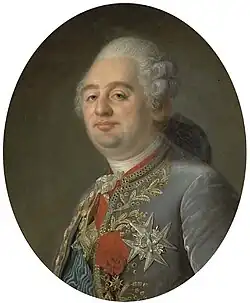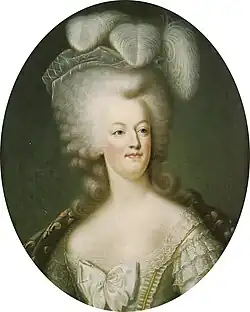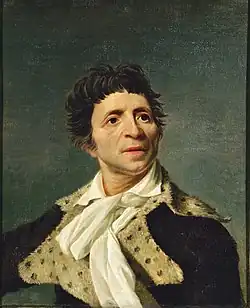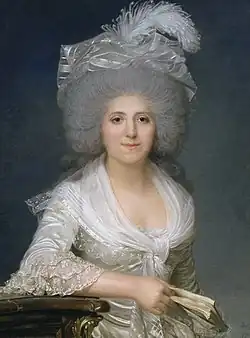Joseph Boze

Joseph Boze (7 February 1746 – 17 January 1826) was a French portrait painter and pastellist mostly active during the ancien régime and the French Revolution.
Biography
Boze was born in Martigues on 7 February 1746, the son of a sailor. He studied painting in Marseille, Nîmes and Montpellier[1] before moving to Paris in 1778.[2] There he became a portrait painter at the court of King Louis XVI, to whom he was possibly introduced to by the Abbé de Vermond,[1] a confidant of Marie-Antoinette at the court. He is believed to have been influenced by Quentin de la Tour.[2]
He exhibited at the Paris Salon for the first time in 1791, where he received negative reviews.[2] Boze initially supported the French Revolution, having joined the Jacobin Club. He painted portraits of numerous leaders of the Revolution, including Maximilien Robespierre, Jean-Paul Marat, and Camille Desmoulins, and French military officers such as Marquis Gilbert de Lafayette and Louis-Alexandre Berthier. Under the constitutional monarchy he remained loyal to Louis XVI, and in 1792 acted as an intermediary between him and the Girondins. He was arrested as a counter-revolutionary during the Reign of Terror, but was released in 1794. He signed a petition in 1799 to have the name of fellow painter Élisabeth Vigée Le Brun removed from the list of émigrés.[2]
Little is known about his life during the subsequent Consulate and the Empire, though he was attested to be living in Paris's quartier de la Sorbonne in 1805 and 1811.[2] In 1817, he was granted a pension by King Louis XVIII in the Bourbon Restoration. Boze died in Paris on 17 January 1826.[2]
Gallery
Portraits
-
 King Louis XVI, c. 1784
King Louis XVI, c. 1784 -
 Queen Marie Antoinette, 1785
Queen Marie Antoinette, 1785 -

-
 Honoré Gabriel Riqueti, Count of Mirabeau, 1789
Honoré Gabriel Riqueti, Count of Mirabeau, 1789 -
 Jean-Paul Marat, 1793
Jean-Paul Marat, 1793 -
 Profile of Maximilien Robespierre attributed to Boze, c. 1794
Profile of Maximilien Robespierre attributed to Boze, c. 1794 -
 Henriette Campan, 1786
Henriette Campan, 1786 -
 Portrait of a French general of division, between 1791 and 1794
Portrait of a French general of division, between 1791 and 1794 -
 Duchess Maria Elisabeth in Bavaria, undated
Duchess Maria Elisabeth in Bavaria, undated -
 Louis-Alexandre Berthier, Marshal of the Empire and husband of Maria Elisabeth, undated
Louis-Alexandre Berthier, Marshal of the Empire and husband of Maria Elisabeth, undated